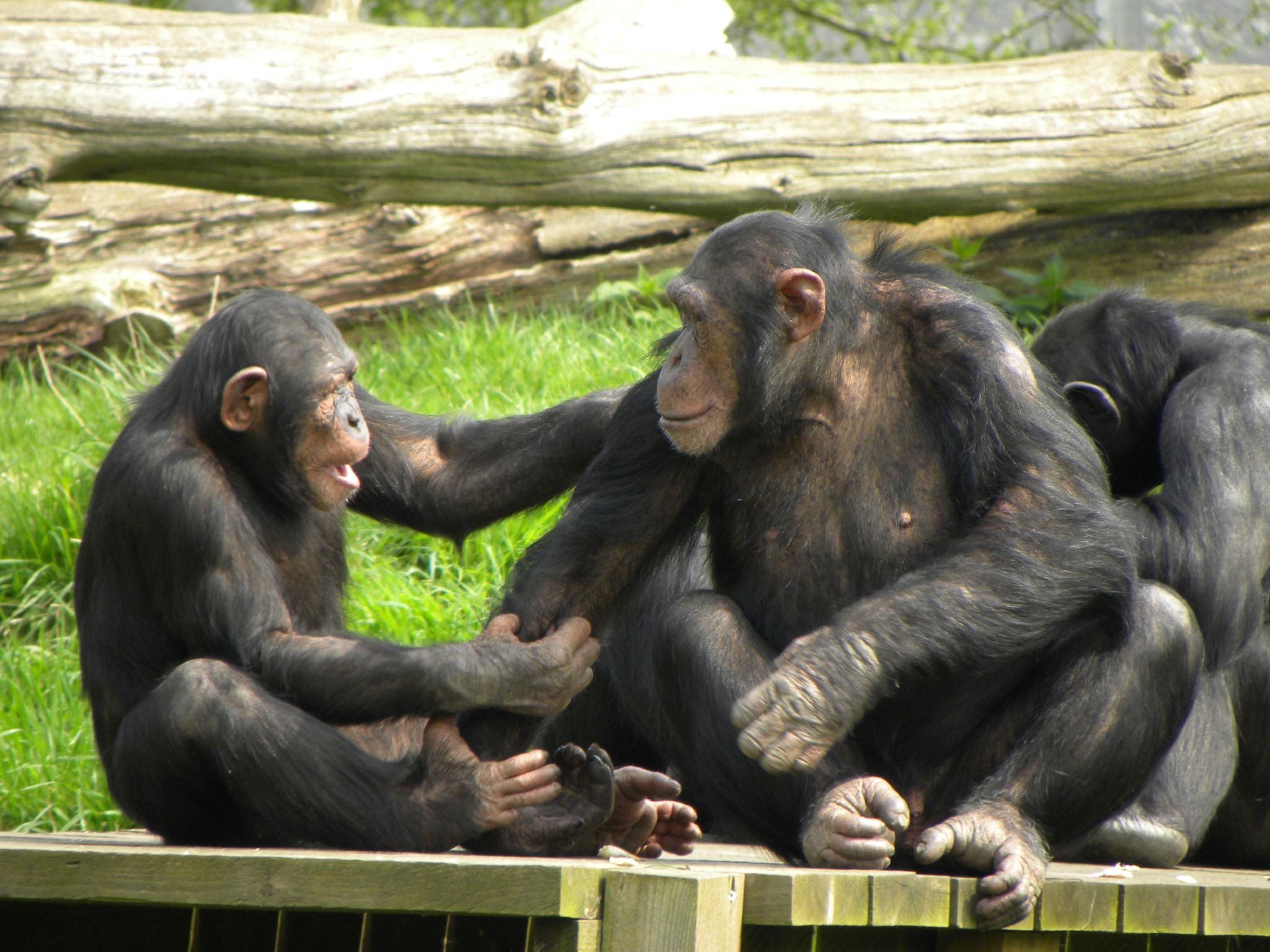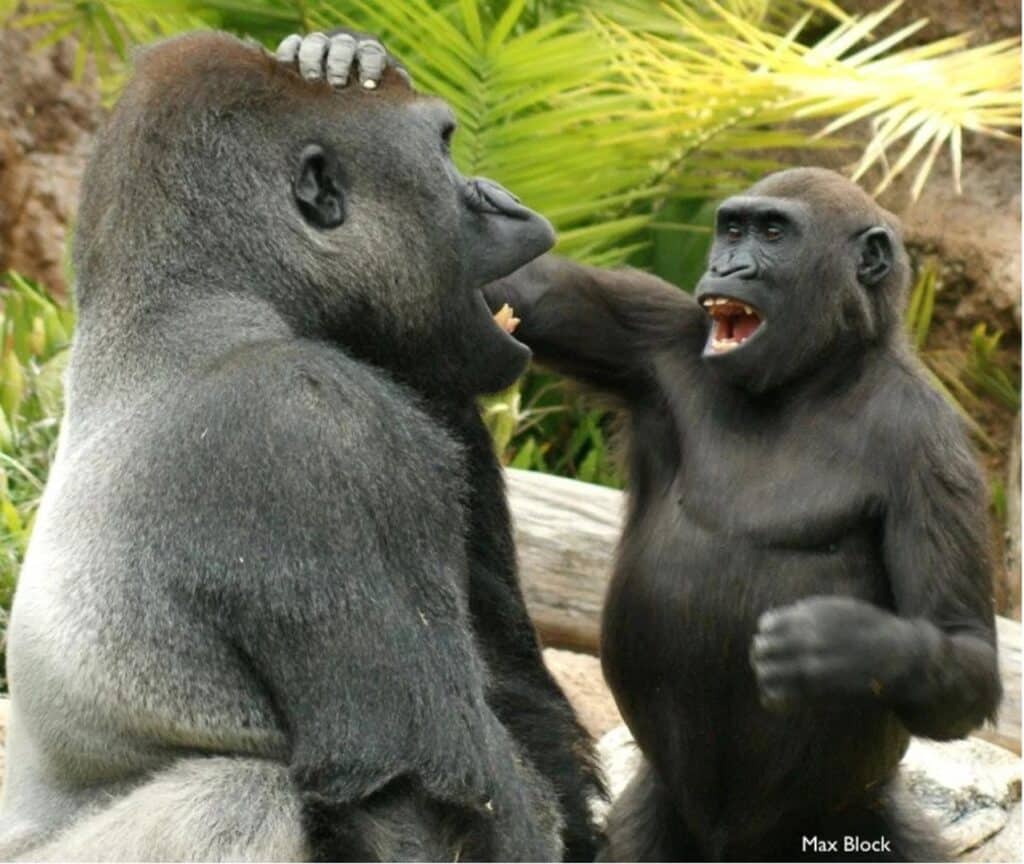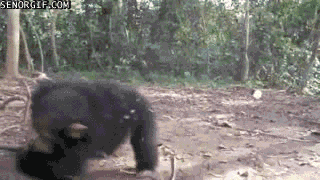Anthropology
Related: About this forumGreat Apes Love to Tease, Poke and Pester, Suggesting the Urge to Annoy Is Millions of Years Old
The desire to get a rise out of others is a 13-million-year-old trait humans and great apes share with a common ancestor, new research suggests
Christian Thorsberg
Daily Correspondent
February 15, 2024

In a study of great apes' playful antics, chimpanzees seemed to enjoy slapping adults, especially those that were dozing off. foshie via Flickr under CC BY 2.0 DEED
Teasing, poking and pestering—creatively perfected by human siblings across the globe—may be a far older pastime than we may have imagined, according to new research.
Scientists studying four primate species have discovered that young apes badger with the best of us, suggesting humans share the art of causing annoyance with some of our closest relatives. In a new paper published Wednesday in Proceedings of the Royal Society B, researchers argue this shared behavior requires a complex cognitive understanding of emotions and social norms—and it formed the “building blocks” of humor as we know it today.
“The precursors for joking were there in the last common ancestor [13 million years ago],” Erica Cartmill, an anthropologist at the University of California, Los Angeles, and co-author of the study, tells the Atlantic’s Katherine J. Wu.
To better understand playful teasing and its role in social situations, the researchers analyzed 75 total hours of footage from great ape habitats in the San Diego and Leipzig zoos. In all, they counted 142 “strong examples of teasing” among nine bonobos, four gorillas, four orangutans and 17 chimpanzees, they write in the study.
More:
https://www.smithsonianmag.com/smart-news/great-apes-love-to-tease-poke-and-pester-suggesting-the-urge-to-annoy-is-millions-of-years-old-180983791/
GreenWave
(6,759 posts)they would probably play much more.![]()
Bayard
(22,103 posts)Judi Lynn
(160,545 posts)Last edited Sat Feb 17, 2024, 05:06 AM - Edit history (1)
Do apes have humor?
By
Pranjal Mehar
14 Feb, 2024

Two gorillas playing © Max Block
Humor and laughter are essential for the flow of natural conversations. It acts as a facilitator of communication. Teasing has much in common with joking, and playful teasing may be seen as a cognitive precursor to joking.
Since language is not required for this behavior, similar playful teasing might occur in non-human animals. Now cognitive biologists and primatologists from the University of California Los Angeles, the Max Planck Institute of Animal Behavior (Germany), Indiana University, and the University of California San Diego have documented playful teasing in four species of great apes species: orangutans, chimpanzees, bonobos, and gorillas.
Scientists found that great apes, such as chimpanzees, gorillas, and orangutans, are excellent subjects for playful teasing. This is because they are closely related to humans, engaging in social play and laughter and demonstrating a relatively advanced understanding of others’ expectations.
The researchers examined natural social interactions among great apes that seemed playful, teasing, or mildly provocative. They carefully observed the actions, body language, facial expressions, and reactions of both the teaser and the target of the teasing. Additionally, they analyzed whether the teasing behavior was intentional, looking for signs that it was directed at a particular individual, continued or became more intense over time and whether the teaser awaited a response from the target.
More:
https://www.techexplorist.com/great-apes-playfully-tease-each-other-study/81010/


Judi Lynn
(160,545 posts)Poking and prodding to provoke a response – behaviour common in human children (and some adults) – were among the behaviours exhibited by the primate pranksters.
Tom Howarth
Published: February 14, 2024 at 8:20 am
Have you ever tapped someone on the far shoulder just to watch them spin around in the wrong direction and then proceeded to do it again moments later? Why is this funny? You might think that finding something like this amusing is an innately human characteristic, with complex communication and context needed for a gag to land, but you’d be wrong.
Fresh research published today in the journal Proceedings of the Royal Society B has found evidence of monkey business (sorry) in four species of great apes, shedding light on the evolutionary origins of humour.
The findings suggest playful teasing, an interaction exhibited by human children as young as eight months old, may have deeper roots in our primate relatives than previously thought.
Such behaviours involve deliberately violating others’ expectations; for example, by repeatedly offering and withdrawing objects or intentionally, and with an element of surprise, disrupting others’ activities.
To uncover these behaviours, the team observed spontaneous social interactions among populations of orangutans, chimpanzees, bonobos and gorillas. They analysed everything from the body movements and facial expressions of the teaser to how the targets of the teasing (the teasee?) responded in turn.
More:
https://www.sciencefocus.com/news/ape-humour